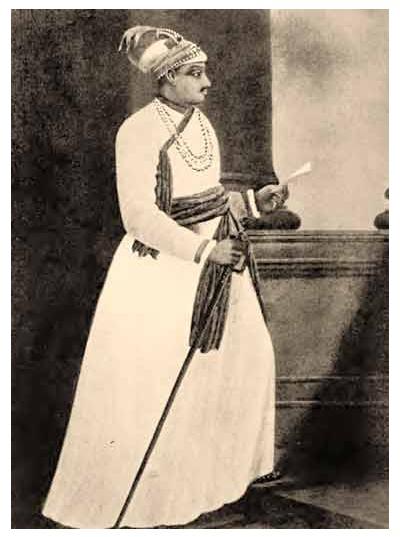On 20 June 1756, 123 Britons perished in a tiny dungeon cell in the city of Calcutta. The incident, which soon became known as the Black Hole of Calcutta, illustrated only too well that the Indian race, when left without Britain’s civilizing influence, was barbaric in the extreme.
 In April 1756, the nawab (provincial governor) of Bengal died and the throne passed to his 23-year-old grandson, Siraj-ud-Daulah (pictured), a name that was soon to become infamous in Britain as the ultimate in perfidy and cruelty. The British had been hastily strengthening Fort William in Calcutta (Kolkata) against possible future French incursion into the city. When Siraj-ud-Daulah demanded that the British desist, the British refused – it was they, after all, that had, in 1690, established Calcutta in the first place. Siraj-ud-Daulah marched into the city with 50,000 men and 500 elephants and, imposing his authority, took it with relative ease.
In April 1756, the nawab (provincial governor) of Bengal died and the throne passed to his 23-year-old grandson, Siraj-ud-Daulah (pictured), a name that was soon to become infamous in Britain as the ultimate in perfidy and cruelty. The British had been hastily strengthening Fort William in Calcutta (Kolkata) against possible future French incursion into the city. When Siraj-ud-Daulah demanded that the British desist, the British refused – it was they, after all, that had, in 1690, established Calcutta in the first place. Siraj-ud-Daulah marched into the city with 50,000 men and 500 elephants and, imposing his authority, took it with relative ease.
Black Hole
The British fled – but not all managed to escape in time. On 20 June 1756, those left behind, 146 soldiers and civilians, including two women, surrendered. Despite assurances that they would be protected, they were imprisoned on the apparent orders of Siraj-ud-Daulah in a tiny cell within Fort William measuring only 18 feet by 14 feet, 10 inches, with only two small windows. Screams and appeals for water were ignored. The prisoners were left to suffocate in the oppressive summer heat, sucking the perspiration from their shirts for liquid or drinking their own urine.